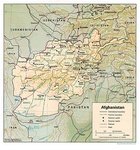
[Editor’s note: Robert A. Pape, a professor of political science at the University of Chicago, is the author of “Dying to Win: The Strategic Logic of Suicide Terrorism.”]
By Robert A. Pape Op-Ed Contributor The New York Times
AS President Obama and his national security team confer this week to consider strategies for Afghanistan, one point seems clear: our current military forces cannot win the war. Gen. Stanley McChrystal, the top American commander there, has asked for 40,000 or more additional United States troops, which many are calling an ambitious new course. In truth, it is not new and it is not bold enough. America will best serve its interests in Afghanistan and the region by shifting to a new strategy of off-shore balancing, which relies on air and naval power from a distance, while also working with local security forces on the ground. The reason for this becomes clear when one examines the rise of terrorist attacks in Afghanistan in recent years.
General McChrystal’s own report explains that American and NATO military forces themselves are a major cause of the deteriorating situation, for two reasons. First, Western forces have become increasingly viewed as foreign occupiers; as the report puts it, “over-reliance on firepower and force protection have severely damaged the International Security Assistance Force’s legitimacy in the eyes of the Afghan people.”
Second, the central government led by America’s chosen leader, Hamid Karzai, is thoroughly corrupt and viewed as illegitimate: “Local Afghan communities are unable to hold local officials accountable through either direct elections or judicial processes, especially when those individuals are protected by senior government officials.”
Unfortunately, these political facts dovetail strongly with developments on the battlefield in the last few years. In 2001, the United States toppled the Taliban and kicked Al Qaeda out of Afghanistan with just a few thousand of its own troops, primarily through the combination of American air power and local ground forces from the Northern Alliance. Then, for the next several years, the United States and NATO modestly increased their footprint to about 20,000 troops, mainly limiting the mission to guarding Kabul, the capital. Up until 2004, there was little terrorism in Afghanistan and little sense that things were deteriorating.
Read more at The New York Times
ATTENTION READERS
We See The World From All Sides and Want YOU To Be Fully InformedIn fact, intentional disinformation is a disgraceful scourge in media today. So to assuage any possible errant incorrect information posted herein, we strongly encourage you to seek corroboration from other non-VT sources before forming an educated opinion.
About VT - Policies & Disclosures - Comment Policy



